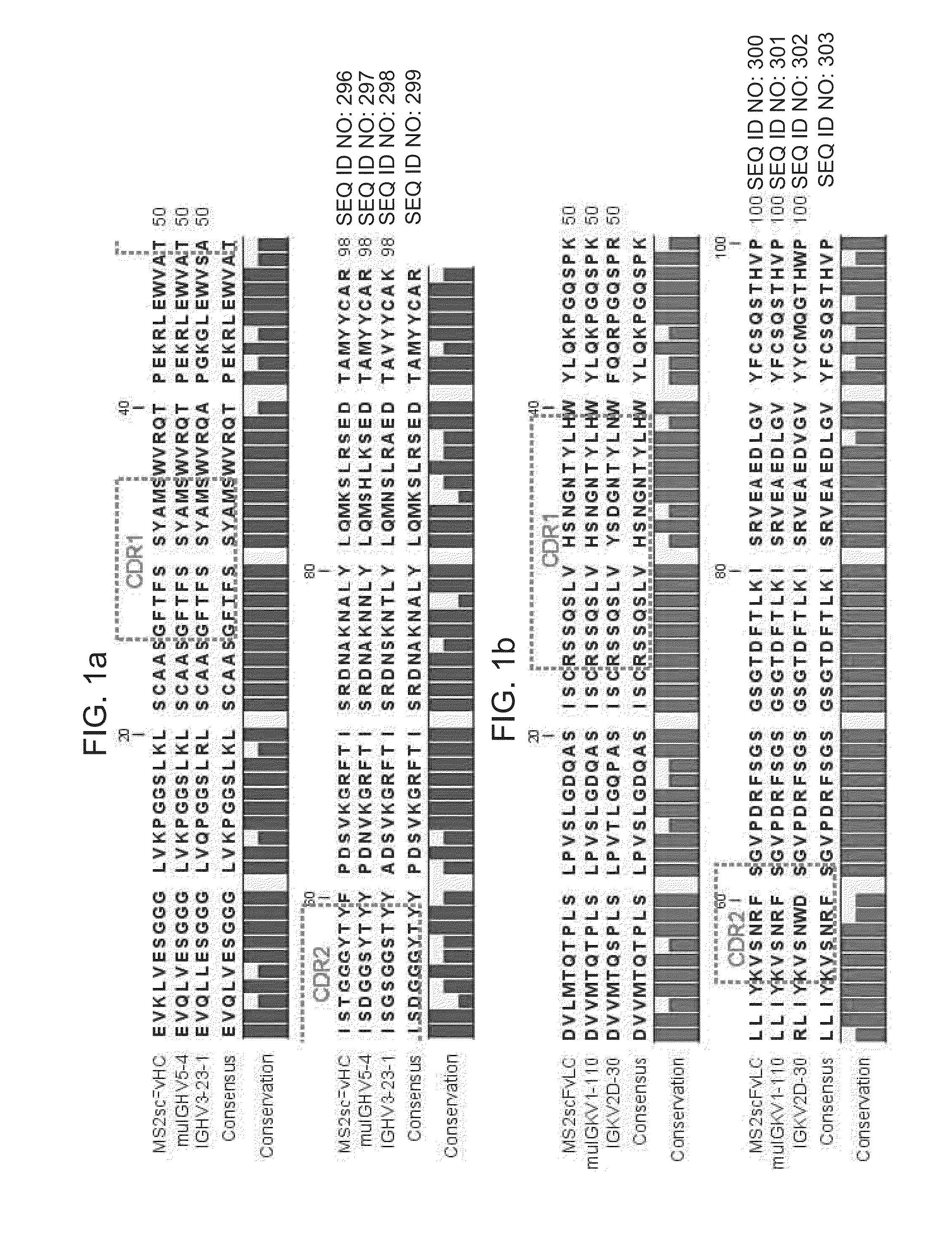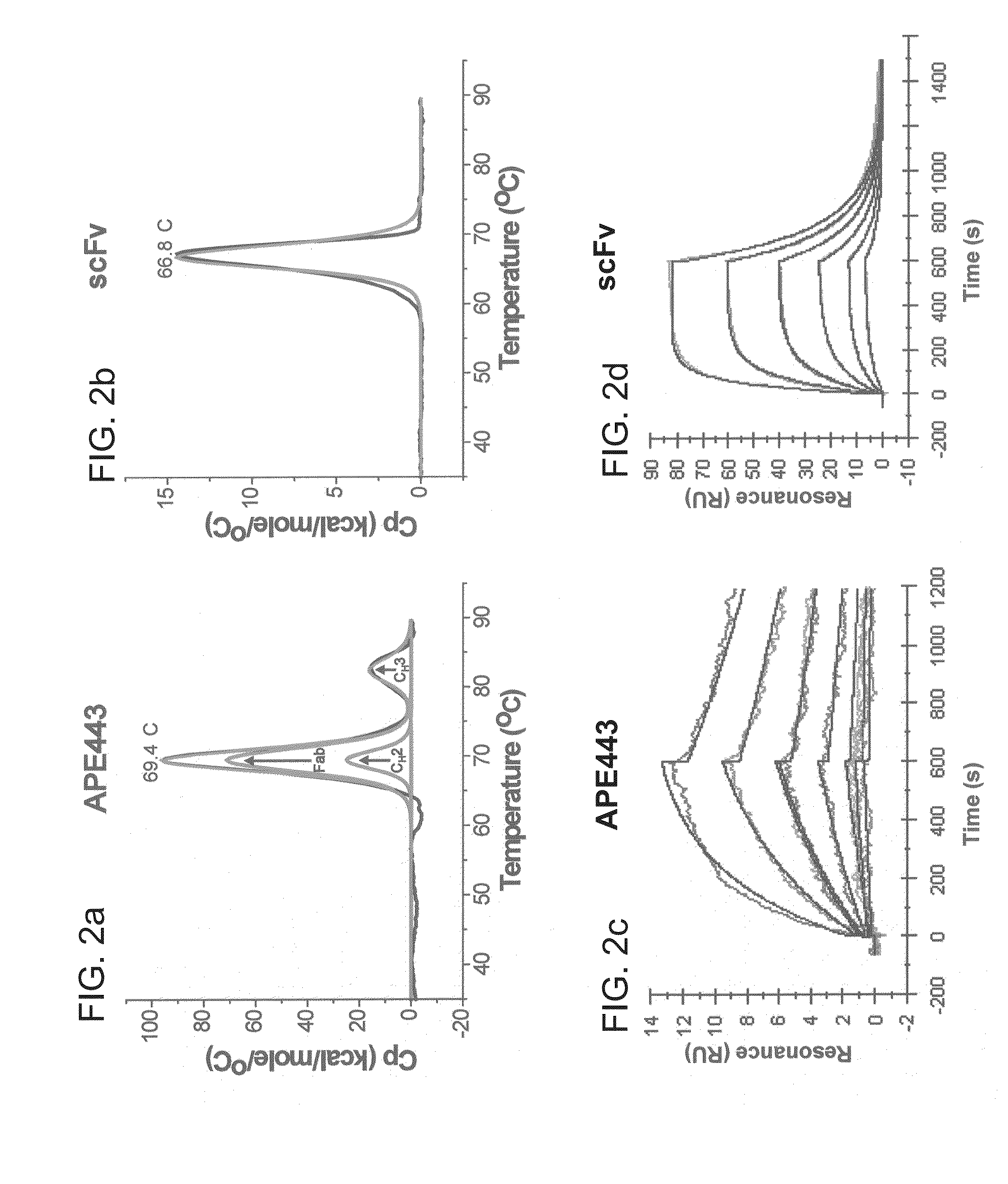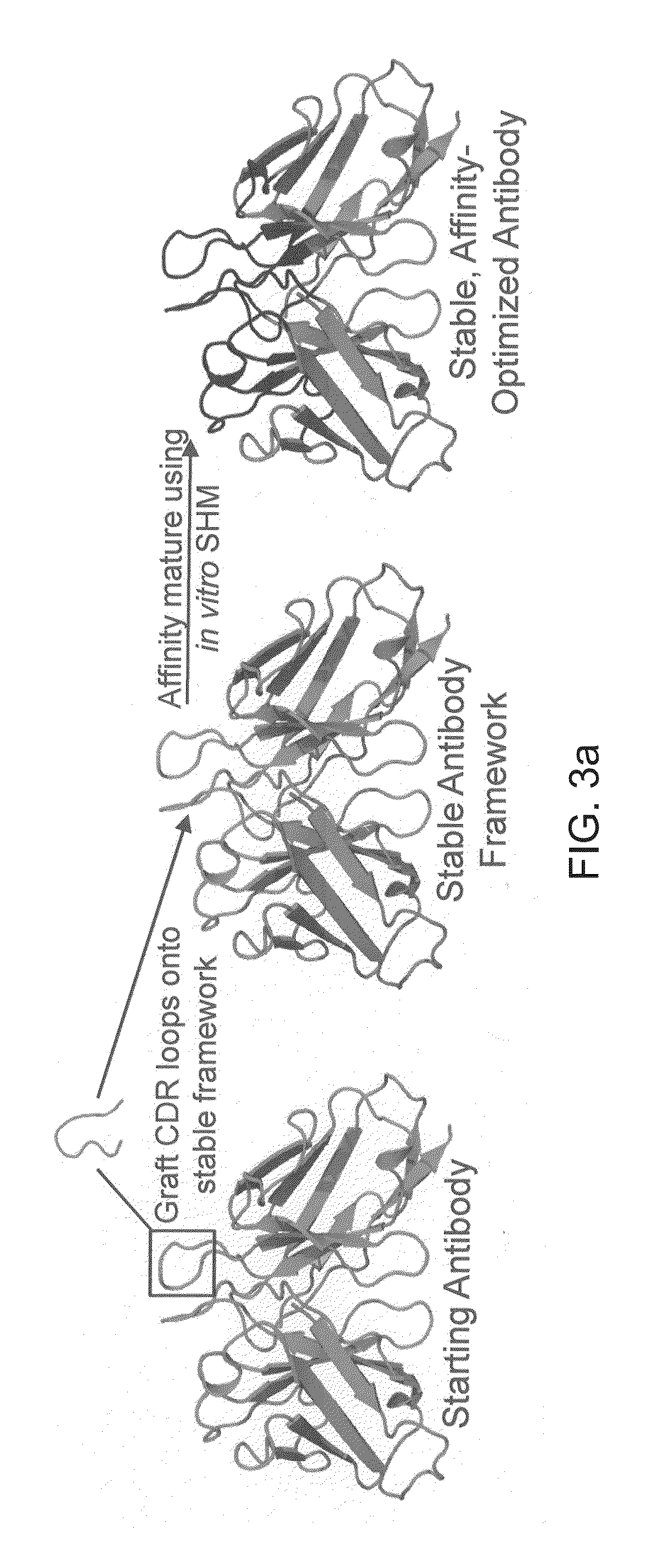Thermostable antibody framework regions
a technology of antibody framework and region, which is applied in the field of thermostabilization methods, can solve the problems of potential disruption of antigen binding, complex and full-length immunoglobulin context, and the inability to use thermostabilization methods in the context of full-length immunoglobulins
- Summary
- Abstract
- Description
- Claims
- Application Information
AI Technical Summary
Benefits of technology
Problems solved by technology
Method used
Image
Examples
example 1
[0088]This example demonstrates a method of grafting CDRs from a mouse antibody onto a stable human framework region.
[0089]With the goal of generating a broadly useful IgG scaffold, stable basis VH and VL domains were selected as a starting point for CDR grafting. Previous studies have demonstrated that VH3 is the most stable family of human VH domains (Ewert et al., J. Mol. Biol., 325: 531-553 (2003)), and that VH3-23 is one of the most commonly utilized human germline heavy chain variable regions (Glanville et al., Proc. Natl. Acad. Sci. USA, 106: 10216-20221 (2009)). Although there is less variation among the VL domains, Vκ1, Vκ2, and Vκ3 domains are among the most stable of the eight human VL domain subgroups (Ewert et al., supra).
[0090]An alignment of a mouse single-chain Fv (scFv) fragment targeting the MS2 bacteriophage coat protein (anti-MS2 scFv) with known human VH domains and VL domains showed that the human VH and VL regions with highest homology to the anti-MS2 scFv wer...
example 2
[0097]This example demonstrates methods of increasing the thermostability of a scFv antibody fragment. The overall strategy for improving antibody stability and affinity is depicted in FIG. 3A.
Improving the VH / VL Heterodimer Interface
[0098]The interface between heavy and light chain variable domains can significantly impact both the stability and affinity of an antibody (Ewert et al., supra). Three interface residues were identified in the VL that differed between the specificity donor (i.e., the anti-MS2 scFv described in Example 1) and acceptor (hVκ2D-30, described in Example 1) using the method outlined in Ewert et al., supra. Residues F36Y, R46L, and Y87F, were changed back to the original scFv sequence, as shown in FIG. 3B, and this modified anti-MS2 scFv was denoted APE556.
[0099]The thermal unfolding profile of APE556 was measured using differential scanning calorimetry (DSC) using the VP-Capillary DSC system (GE Healthcare). Antibodies were tested in phosphate buffered saline...
example 3
[0111]This example demonstrates a method of producing stable human antibody framework regions using a combination of methods in accordance with the invention.
[0112]An anti-MS2 antibody fragment, denoted APE979, was generated to test the impact of combining the stabilizing amino acid changes described in Example 2 into a single antibody molecule. In this respect, a stabilized Fab domain was generating by using a combination of the methods described in Example 2, and the stabilized CH2 domain described in Example 2 was introduced into the context of the stabilized Fab domain. This combination increased the Tm of the stabilized CH2 to 84.5° C., which is a 15.1° C. improvement relative to the initial CDR-grafted antibody, as shown in FIG. 5B (as compared to FIG. 4C). The combined antibody additionally exhibited a 0.7° C. and 4.3° C. increase in Fab and CH3 melting temperatures, respectively, upon incorporation of the stabilized CH2 into APE1025. The total calorimetric heat change of unf...
PUM
| Property | Measurement | Unit |
|---|---|---|
| Tm | aaaaa | aaaaa |
| ka | aaaaa | aaaaa |
| ka | aaaaa | aaaaa |
Abstract
Description
Claims
Application Information
 Login to View More
Login to View More - R&D
- Intellectual Property
- Life Sciences
- Materials
- Tech Scout
- Unparalleled Data Quality
- Higher Quality Content
- 60% Fewer Hallucinations
Browse by: Latest US Patents, China's latest patents, Technical Efficacy Thesaurus, Application Domain, Technology Topic, Popular Technical Reports.
© 2025 PatSnap. All rights reserved.Legal|Privacy policy|Modern Slavery Act Transparency Statement|Sitemap|About US| Contact US: help@patsnap.com



